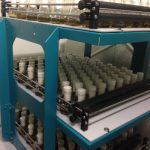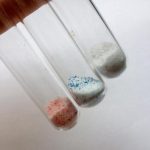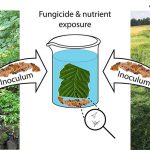The School of Veterinary Medicine and Department of Wildlife, Fish, and Conservation at University of California, Davis, is hiring a PostDoc in fish conservation and effects of contaminant exposure.
Tag Archives: effects
MSc thesis opportunity: Impacts of chemical stressors on the enzyme activity in microbes

We offer a Master thesis on effects of different chemical stressors on the activity of biopolymer-cleaving enzymes in leaf-associated microbial biofilms.
PostDoc opportunity on salinization effects & life cycle assessment in Catalonia
In the scope of a PostDoc call in Catalonia, there is an opportunity on integrating biodiversity and ecosystem health into life-cycle assessment using freshwater salinization as a case study, jointly offered by researchers at University of Barcelona and University of Vic.
Environmental and socioeconomic impacts of mosquito control: the European perspective!

In this post, Stefanie Allgeier and Carsten Brühl report about their recently organized workshop on impacts of mosquito control using Bacillus thuringiensis israelensis (Bti), which was part of our project “Establishment of a nature conservation-compatible concept for mosquito control”, funded by the German Federal Foundation for the Environment (DBU).
Assistant Professor position in Ecotoxicology at Stockholm University
Stockholm University is hiring an Assistant Professor in Ecotoxicology, specializing in regulatory decision-making, within its Department of Environmental Science and Analytical Chemistry, Exposure & Effects Unit.
Costa Rica: A tropical e(coto)xperience – Part 6

In this series of posts, Carsten Brühl reports about his current trip to Costa Rica. Part 6 is all about his guest lecture in the “Tropical Ecotoxicology” masters program at National University of Costa Rica.
How can we predict the effect of multiple stressors?

In this post, Ralf Schäfer reports on their recently published paper “Advancing understanding and prediction in multiple stressor research through a mechanistic basis for null models”.
4 PhD positions at UFZ
The Helmholtz Centre for Environmental Research (UFZ) in Leipzig is offering four PhD positions in the project “Proxies of the eco-exposome” to assess the impact of environmental chemicals on the ecosystem.
Cosmetics as a source of microplastics for freshwater ecosystems

In this post, Gabriela Kalcikova talks about their recently published paper “Wastewater treatment plant effluents as source of cosmetic polyethylene microbeads to freshwater”.
Exposure history-dependent effects on ecosystem functioning in streams

In this post, Alexander Feckler talks about their recently published paper “History matters: heterotrophic microbial community structure and function adapt to multiple stressors”.
